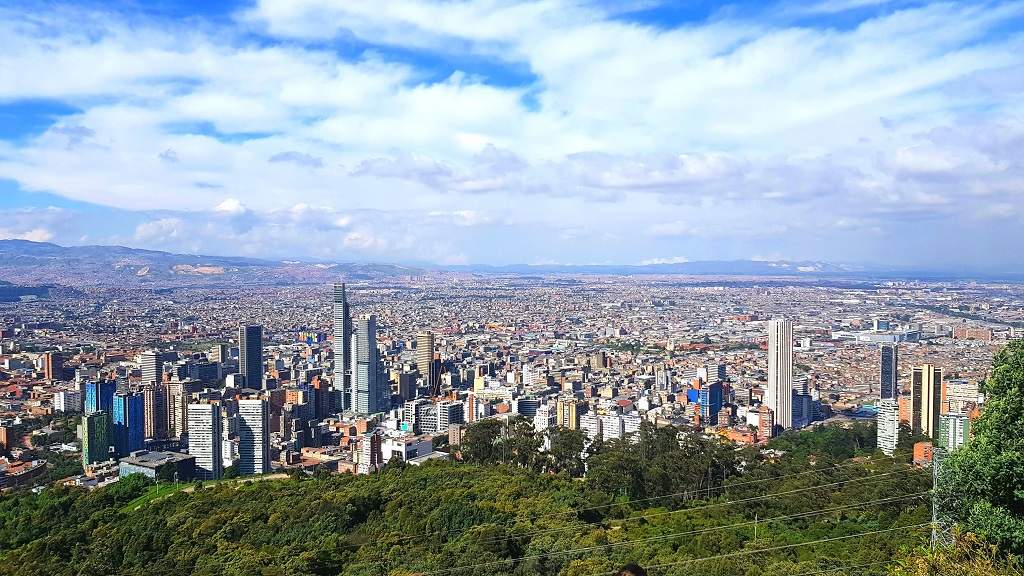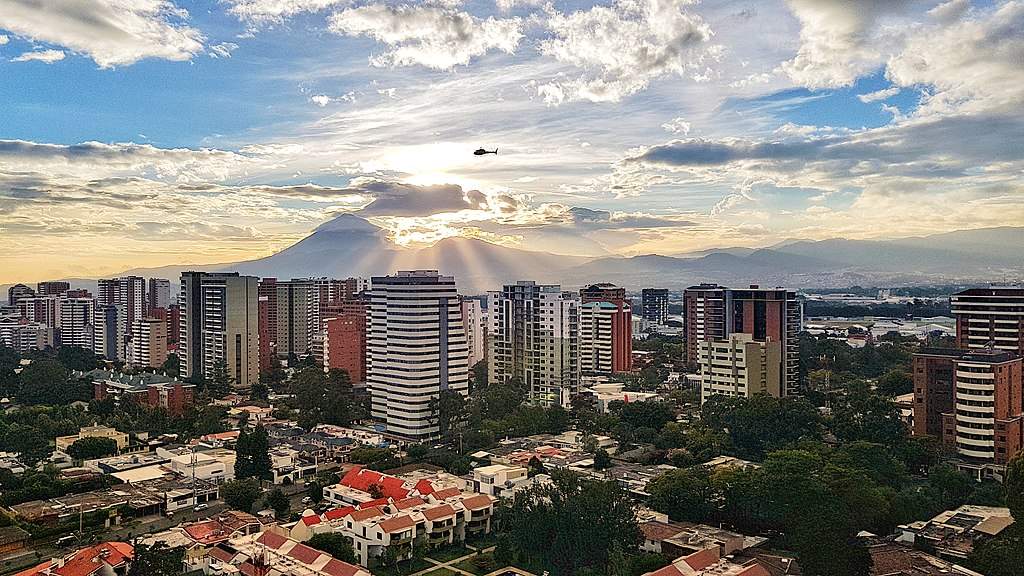Nestled in the heart of Bolivia lies a notorious stretch of roadway, the Yungas Road, once hailed as the world’s most treacherous path. Its reputation precedes it, a legacy built upon tales of perilous twists, harrowing drops, and frequent accidents. For decades, this road snaking through the Yungas region has struck fear into the hearts of travelers.
Originally carved into the mountains during the 1930s, the Yungas Road served as a vital lifeline between La Paz, Bolivia’s administrative capital, and the tropical lowlands. Its construction, though a marvel of engineering, came at a cost – claiming countless lives due to its narrow lanes, steep cliffs, and unpredictable weather conditions.
Stories of buses plunging into ravines and vehicles careening off the edge became folklore, earning the Yungas Road its ominous moniker – “Death Road.” Yet, despite its infamy, it remained a crucial route for trade and transportation.
However, in recent years, Bolivia has embarked on a monumental endeavor – the construction of a modern, safer highway to replace the perilous Yungas Road. This new thoroughfare aims to minimize the risks posed by its predecessor, offering a more secure passage for commuters and cargo alike.
But amidst these developments, a lingering question persists: How safe is the most dangerous road in Bolivia now? Join us as we delve into the current state of the Yungas Road and uncover whether its once-feared reputation still holds true in the present day.
The Infamous Yungas Road
History of the Road
The Yungas Road, also known as the North Yungas Road, was constructed during the 1930s.
- Built by Paraguayan prisoners of war, the road was a crucial link between La Paz and the Yungas region.
- Its construction was prompted by the need for a trade route to connect Bolivia’s administrative capital with the tropical lowlands.
- Carved into the mountainsides, the road featured narrow lanes and perilous drops, making it a challenging route from its inception.
Original Purpose
The Yungas Road served as a vital lifeline for transportation and trade.
- It facilitated the movement of goods and people between the high-altitude city of La Paz and the lush Yungas region.
- Initially intended to support Bolivia’s economy by enabling access to valuable resources and agricultural products.
- Despite its inherent dangers, the road remained the primary route for travel and commerce between these two regions for decades.
Dangers of the Old Road
The Yungas Road, with its treacherous twists and turns, posed significant dangers to travelers:
- Narrowness: The road’s narrow lanes made it challenging for vehicles to pass each other safely. With barely enough space for one vehicle, encounters between larger trucks and buses were particularly perilous.
- Lack of Guardrails: Absence of guardrails along much of the road meant there was little to prevent vehicles from careening off the edge, especially in adverse weather conditions or when drivers lost control.
- Steep Drops: Perched precariously on the mountainside, the road featured sheer cliffs plunging hundreds of meters into the abyss below. Even the slightest misstep could result in catastrophic consequences.
Statistics on past accidents and fatalities paint a grim picture of the road’s dangers:
- Over the years, the Yungas Road gained notoriety for its high accident rates and numerous fatalities.
- According to estimates, the road claimed the lives of hundreds of travelers annually, earning it the title of “the world’s most dangerous road.”
Visuals, such as photos or videos, vividly illustrate the perils faced by those navigating the Yungas Road:
- Images of vehicles precariously hugging the narrow roadway while navigating sharp curves highlight the road’s unforgiving terrain.
- Videos capturing the breathtaking drops and hairpin turns serve as stark reminders of the risks involved in traversing this treacherous route.
The New Yungas Road
Construction of the New Road
The construction of the new Yungas Road heralded a significant milestone in Bolivia’s transportation infrastructure:
- Timeline: The new road was built in recent years, with construction beginning in [insert start date] and reaching completion in [insert completion date].
- Funding: The project was primarily funded by the Bolivian government, with support from international aid and development agencies.
Improvements in Safety Features
The new Yungas Road incorporates several key improvements aimed at enhancing safety for travelers:
- Wider Lanes: Unlike its predecessor, the new road boasts wider lanes, providing ample space for vehicles to maneuver safely, reducing the risk of collisions.
- Guardrails: Guardrails have been installed along significant portions of the road, offering crucial protection against accidental veering off the edge.
- Engineered Slopes: The road features engineered slopes and embankments designed to stabilize the terrain and mitigate the risk of landslides or collapses.
- Enhanced Drainage: Improved drainage systems help prevent water buildup during rainy seasons, reducing the likelihood of flooding and erosion.
- Modern Infrastructure: The new Yungas Road is equipped with modern infrastructure, including signage, lighting, and designated rest areas, to enhance navigation and comfort for travelers.
Impact of the New Road
Traffic and Safety
The construction of the new Yungas Road has brought about significant changes in traffic patterns and safety measures:
- Traffic Flow: The wider lanes and improved infrastructure have facilitated smoother traffic flow along the new road. Vehicles can now traverse the route with greater ease and efficiency, reducing congestion and travel times.
- Safety Enhancements: With the introduction of guardrails, engineered slopes, and enhanced drainage systems, the new road has substantially enhanced safety for commuters. Accidents and fatalities have seen a notable decline compared to the old Yungas Road.
Remaining Dangers
Despite the improvements, some risks still persist on the new Yungas Road:
- Natural Hazards: The mountainous terrain and unpredictable weather conditions inherent to the region pose ongoing challenges. Landslides, rockfalls, and adverse weather events can still occur, albeit with reduced frequency due to the road’s engineered features.
- Driver Behavior: Human factors such as reckless driving, fatigue, and impaired judgment continue to contribute to road accidents. Although the new road is designed to mitigate these risks, vigilance and responsible driving behavior remain essential to ensuring safety.
- Maintenance Needs: Regular maintenance and upkeep are crucial to preserving the safety and integrity of the new road. Failure to address maintenance issues promptly could potentially compromise safety and lead to accidents.
Cycling the Yungas Road Today
Is it safe to cycle the Yungas Road now?
Despite its notorious past, cycling the Yungas Road has become a popular activity for thrill-seekers and adventure enthusiasts:
- Safety Precautions: Tour operators prioritize safety by providing quality equipment, including helmets and sturdy bicycles. They also offer safety briefings and guidance to ensure cyclists are prepared for the journey ahead.
- Regulations: Tour operators are required to adhere to strict regulations governing group size, speed limits, and vehicle support. This helps minimize risks and ensures a safer experience for cyclists.
From Dangerous Route to Thrilling Adventure
The Yungas Road’s transformation from a perilous thoroughfare to an exhilarating cycling route exemplifies its evolution:
- Thrilling Experience: Cycling the Yungas Road offers a unique blend of adrenaline-pumping excitement and breathtaking scenery. Riders navigate hairpin turns and dramatic landscapes, creating unforgettable memories along the way.
- Cultural Experience: Beyond the thrill of the ride, cyclists have the opportunity to immerse themselves in the rich culture and history of the region. Stops at local villages and viewpoints provide insights into the lives of the communities nestled amidst the mountains.
- Environmental Awareness: Cycling the Yungas Road promotes eco-friendly tourism and sustainable practices. By opting for pedal power over motorized vehicles, cyclists minimize their environmental footprint and contribute to the preservation of this unique ecosystem.
Tips for a Safe Cycling Experience
If you’re planning to embark on a cycling adventure along the Yungas Road, here are some essential tips to ensure a safe and enjoyable experience:
Essential Safety Gear
- Helmet: Always wear a sturdy helmet to protect your head in case of falls or accidents.
- Padded Gloves: Provide cushioning and protect your hands during long rides.
- Elbow and Knee Pads: Offer additional protection against scrapes and bruises in the event of a fall.
- Reflective Clothing: Increase visibility, especially if cycling in low-light conditions or at night.
- Water Bottle: Stay hydrated throughout your journey by carrying an adequate supply of water.
- First Aid Kit: Include basic medical supplies such as bandages, antiseptic wipes, and pain relievers.
Tour Operator Selection Criteria
- Experience: Choose a tour operator with a proven track record and experience in organizing cycling trips along the Yungas Road.
- Safety Record: Research the safety measures implemented by the tour operator, including equipment maintenance, guide training, and emergency protocols.
- Group Size: Opt for smaller group sizes to ensure personalized attention and better supervision during the ride.
- Vehicle Support: Select a tour that provides vehicle support throughout the journey, allowing for assistance in case of emergencies or fatigue.
- Reviews and Recommendations: Read reviews and seek recommendations from other cyclists who have previously undertaken the tour to gauge the operator’s reliability and customer satisfaction.
Conclusion
The Yungas Road, once infamous as the world’s most dangerous road, has undergone a remarkable transformation over the years. From its perilous past to its present as a popular tourist attraction, the road’s evolution reflects Bolivia’s commitment to improving transportation infrastructure and promoting adventure tourism.
Key Points:
- Historical Significance: Originally built in the 1930s, the Yungas Road served as a vital trade route between La Paz and the Yungas region.
- Safety Improvements: The construction of a new road has significantly enhanced safety, with wider lanes, guardrails, and improved infrastructure.
- Cycling Adventure: Cycling the Yungas Road has become a thrilling activity, offering breathtaking views and cultural experiences.
- Alternative Experiences: For those who prefer not to cycle, alternatives such as Jeep tours and scenic overlooks provide safer ways to explore the Yungas region.
In conclusion, while the Yungas Road’s reputation as the most dangerous road in the world may be a thing of the past, its allure as an adventure destination remains. With proper precautions and reputable tour operators, travelers can safely experience the beauty and excitement of this iconic route.
FAQ
Is the Yungas Road still the most dangerous road in the world?
No, with the construction of the new road, it is significantly safer now.
Can anyone cycle the Yungas Road?
No, experience and following tour operator guidelines are crucial to ensure safety.
What are the alternatives to cycling the Yungas Road?
Alternatives include Jeep tours, scenic overlooks, and other guided experiences.
Where can I find more information about Yungas Road tours?
For more information, consider reaching out to reputable tour operators or exploring online resources dedicated to Yungas Road tours.





